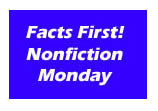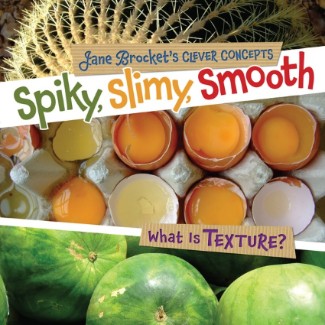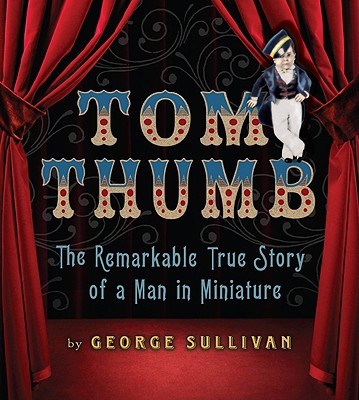
Picture Yourself Writing Poetry: Using Photos to Inspire Writing
by Laura Purdie Salas
Capstone Press, August 2011
32 pages
Ages: 8 and up
This title is one of the Picture Yourself Writing ____: Using Photos to Inspire Writing series, and it’s quite effective—it inspired me to write! Not only does it demonstrate how one can use images to get ideas for poems, it also contains many specific, easy-to-understand writing tips. Salas covers such important topics as incorporating sensory detail, choosing concrete nouns and strong verbs, characterization and point of view, and structure, all paired with wonderful examples.
The books opens up with the line, “The best poems are magical, miniature worlds.” It then shows readers how to create those worlds themselves while inviting them to enter several created by Salas.
I think this would be a great book to incorporate into any poetry curriculum. I would also heartily recommend it to students who enjoy writing… as well as to those who tend to struggle with it.

(Disclaimers: I received this copy for review for free from the publisher as part of the Cybils judging process. This review is my opinion only and doesn’t necessarily reflect the judging committee’s selections.)
Nonfiction Monday
Humor in nonfiction books for kids

Some people think nonfiction is dry and boring. How can facts be fun, right? WRONG! Humor in nonfiction not only gets and keeps readers engaged, it can also help them retain the information longer. My fellow writers of nonfiction for kids (on the NFforKids Yahoo group and on Twitter) and I have put together a list of our favorite FUNNY nonfiction titles for kids. Here’s what we came up with, in no particular order:
- Just the Right Size, Extreme Animals (and others) by Nicola Davies
- How to Get Organized Without Losing It by Janet S. Fox
- How To Do Homework Without Throwing Up by Trevor Romain
- Manners Mash-Up: A Goofy Guide to Good Behavior by Tedd Arnold and others
- What To Do About Alice by Barbara Kerley
- The Basher books (Physics, Periodic Table, Biology, etc.) by Simon Basher
- Kathleen Krull’s Lives of the… series
- You Wouldn’t Have Wanted To Be A… series by various authors
- Fingers, Forks, & Chopsticks by Patricia Lauber
- Poop Happened by Sarah Albee
- Americapedia by Jodi Lynn Anderson, Daniel Ehrenhaft, Andisheh Nouraee
- How They Croaked by Georgia Bragg
- Bugs and Bugsicles: Insects in the Winter by Amy Hansen
- What to Expect When You’re Expecting… series by Bridget Heos
- It’s Spit-acular: The Secrets of Saliva by Melissa Stewart
- The Truth About Poop by Susan E. Goodman
- Gee Whiz by Susan E. Goodman
- See How They Run by Susan E. Goodman
- Fartiste by Kathleen Krull (which I blogged about here)
- Do Pigs Have Stripes? by Melanie Walsh
- Bubble Homes and Fish Farts by Fiona Bayrock
- Ant, Ant, Ant, An Insect Chant by April Pulley Sayre
- What’s So Funny? Making Sense of Humor by Donna M. Jackson
This is just a sampling of our favorites. Do you have any to add? Please let us know in the comments!
I found it interesting that often the humor is primarily in the illustrations, with the text playing it fairly straight. In fact, in many cases it’s only the juxtaposition of the two that tickles your funny bone. In others, the humor is mild (a smile rather than a belly laugh) or is just hinted at rather than being an explicit joke. Sometimes, the topic itself is pretty funny, but the text is fairly serious. Given how much kids love to read humor, I wonder if that’s all just coincidence, or if humor just isn’t as tolerated in nonfiction texts, or maybe nonfiction writers just don’t have a sense of humor (I’m sure not buying that last one!). Thoughts?
Nonfiction Monday book review: Spiky, Slimy, Smooth
I must admit, when my own daughter entered kindergarten and started the unit on texture, I was surprised. Yes, textures are all around us, but what’s to study? These kids are already experts. After all, they’ve been feeling textures since before they were born (often with their mouths)!
I soon realized that’s exactly the point, though. They are all around us, but do we have the words to describe them? Have we really ever thought about how things feel, or why? This isn’t important only for its scientific implications, it’s also critical for good writing! I enjoyed seeing my children go through this topic and gain a new appreciation for the things around them. And I especially loved trying to help them come up with exactly the right words to describe a common, or not so common, texture.

In SPIKY, SLIMY, SMOOTH (Lerner/April 1, 2011/32 pages/ages 4–8), Jane Brocket combines beautiful, bold photos of everyday objects with deliciously descriptive language.
While the reading level seems a bit too advanced for most kids who will likely be studying textures as part of their science curriculum, it will make a great read-aloud for their teachers looking for an engaging way to present the topic. Brocket’s text includes many interactive elements, and her kid-friendly photos will have young learners wiggling their toes, delving into their memory banks, and stretching their imaginations to experience the textures themselves.
Happy Nonfiction Monday! You can see the rest of the roundup over at Rasco from RIF here.
Review: Tom Thumb
 TOM THUMB: THE REMARKABLE TRUE STORY OF A MAN IN MINIATURE
TOM THUMB: THE REMARKABLE TRUE STORY OF A MAN IN MINIATURE
I just finished an advance reading copy of TOM THUMB: THE REMARKABLE TRUE STORY OF A MAN IN MINIATURE by George Sullivan (Clarion; February, 2011; 208 pages; grades 5–9).
Writing non-fiction is like putting together the pieces of a puzzle, says author George Sullivan… “I like nonfiction because I’m a very curious person, and the research that I do I find introduces me to new worlds,” he said. “I’m always interested in finding out what people were really like—how they live, what the family life was like, what motivated them.” (full article here)
I think he succeeds in conveying that sense of curiosity and wonder to his readers, and TOM THUMB should be of great interest to middle-graders for both pleasure reading and researching reports.
In TOM THUMB, Sullivan pieces together the puzzle behind the real-life story of Charles Sherwood Stratton (a dwarf who would later become famously known as Tom Thumb), as well as those of P.T. Barnum and Tom Thumb’s wife, Lavinia.
Written as a narrative, the text chronologically follows Tom Thumb’s life and beyond, weaving an interesting biography and tale of history and showmanship. Sullivan treats his subject with careful dignity and respect.
In addition to the story itself, librarians, teachers, and researchers will appreciate the attention to backmatter, including acknowledgements, about the sources, end notes, bibliography, books and articles list, and an index.
In my mind, the book also raises some interesting opportunities for discussions in classrooms and children’s book clubs:
- The book makes it clear that Tom Thumb apparently enjoyed playing his roles and living life as a performer in the public eye, but others, most notably Barnum and Tom Thumb’s own parents, also profited from his on-stage antics. At what point does it constitute exploitation to treat people this way? What factors might have made it acceptable historically? How is it different today? What types of exploitation, if any, still exist today? Should they be banned?
- The book reveals Barnum’s skills in self-promotion, marketing, and knowing what audiences wanted and were willing to pay for. It also reveals several knows cases of “humbuggery,” or instances where he knowingly deceived audiences to draw bigger crowds and more profit. Is this behavior acceptable for a “showman?” What might “humbuggery” look like today, and how do we try to protect consumers from it? Are we successful? How can we be on the lookout for “humbuggery” in today’s media?
Sullivan has written more than 100 books for children, and he’s still writing in his 80s. He shared some of his tips here, including:
“I write very early in the morning, when my mind is fresh and when I know I’m not going to be interrupted by the telephone or visitors or whatever might occur during the day,” he said. “I do a great deal of work in the early morning hours.”
And,
“You take the project and you break it into pieces,” he said. “You have an outline that breaks it down into different categories. Then you research each of these pieces, instead of trying to do everything all at once.”
Good advice. And Sullivan has certainly built a book, and a career, worth emulating.
